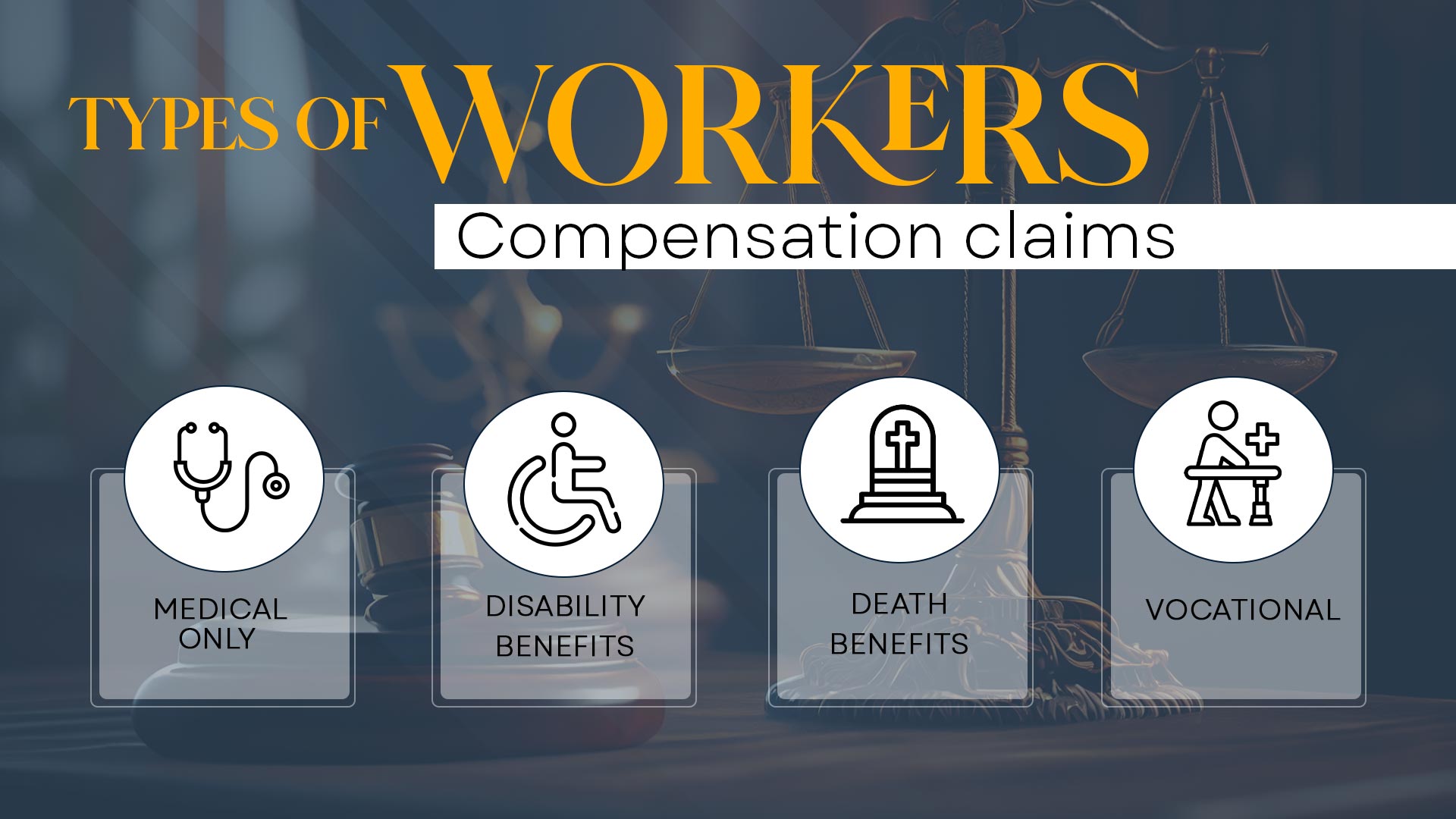Did you know workers’ compensation claim is more than one type? The severity of the injury determines the classification. Workers’ compensation claims have three categories:
- Medical
- Disability
- Death
However, there is a broader classification, which divides workers’ compensation claims into seven categories, with four of them being subclasses of disability. We will discuss them, but first, we will get ourselves a brief overview of what we are talking about.
What is Workers’ Compensation?
A worker is a person working on the payroll for an employer. Workers’ compensation is the benefits the worker receives for his liabilities. These liabilities are health impairments and monetary losses the worker sustained. They usually include lost wages for days when the worker could not work, the fee paid for their appointments with the attorney, and the expenses paid for medical bills.
What is a Workers’ Compensation Claim?
There are safety rules for every workplace to prevent potential accidents. However, mistakes are inevitable, and workers can be injured in an unsafe work environment even when it isn’t their fault.
Did you know the workers’ compensation system did not exist once? Back then, getting injured in the workplace could complicate things for the worker and their employer.
The worker would suffer from pain, loss of money, and even their ability to earn. The employer would be exposed to litigation and was at risk of a lawsuit from the employee. The settlement amount would likely be much higher than the actual amount the worker will lose.
However, since the advent of the workers’ compensation law, it has become easier for both workers and employers to reach a favorable settlement.
7 Types of Workers’ Compensation Claims

Medical-Only
It is the easiest and simplest claim type to file and process. It includes cases of mild injuries a worker sustained, which will require short-term treatment. The injured worker can get back to work the same or the next day, depending on the injury and recovery.
For example, a gym trainer sprains his ankle while doing an exercise and is unable to work anymore. Then, they may have to go to a doctor. In such a case, the trainer can return to work after the day of their treatment. The only compensation he may claim is the cost of the appointment with the doctor.
You May Also Read: What Is The Difference Between Workers’ Compensation And Disability Benefits?
Temporary Partial Disability
In this case, a worker is impaired partially long enough, failing to perform their daily duties. They can take some time off, or the employer can assign light work.
The workers’ compensation claim will compensate for the lost wages and medical treatment costs. For instance, a car mechanic dropped a heavy weight on their arm and fractured it, so they cannot perform regular duties but can continue doing light duty.
Temporary Total Disability
If an injury is too severe for an employee to work, they come under the TTD category. Their diagnosis will suggest complete recovery, during which period they cannot work at all.
An example would be a mine worker who broke his vertebrae and became paralyzed from the waist down. He can recover and get back to work after rehabilitation. However, he cannot work when paralyzed.
Workers’ compensation, in this case, will cover treatment costs, rehabilitation, and visiting a doctor or chiropractor, along with the replacement wages.
Permanent Partial Disability
A PPD claim covers all workers with injuries that keep them from their regular duties. They are typically workers not retained by their employers, and even if they are, they get a job more suited to their restricted abilities.
However, they continue to enjoy the benefits even after unemployment because they have lost their ability to earn. For instance, a factory worker who lost a limb during heavy machinery use is impaired for life and cannot do the same job they used to.
Permanent Total Disability
In this compensation claim, the worker may have lost their ability to earn because of a severe injury that prevents them from doing their usual duties, and they certainly will never fully recover. In this situation, they will receive compensation under the PTD claim.
The compensation will include all the medical expenses because of the injury, such as replacement wages, cost of attorney, and losing the ability to earn. An example would be a chemical factory worker who has lost their vision because their eyes were exposed to a chemical leak.
Death
Some accidents are lethal, where a worker can not escape death due to their injuries. According to workers’ compensation law, their immediate family, like spouses and children, receive compensation because they have lost their financial dependency.
Most states have a method to calculate the money to be given as death benefits to the deceased workers’ dependents as per their wages. While it has a maximum and minimum value, some states may provide a lump sum to the dependents. In some cases, the compensation may also cover funeral expenses.
Vocational Rehabilitation
This compensation is for injured employees who will return to work for the same or a similar job at the same or different place. The benefits may include rehabilitation, re-training, or a healthcare professional specializing in coping with the recovery.
You May Also Read: Injured Yourself At Workplace? Know Your Rights
California’s Workers’ Compensation Claim Process in California: Step-by-step guide
- Report Promptly: Notify your employer of the injury immediately.
- Seek Medical Attention: Prioritize your health; get timely medical care.
- Claim Form: Complete the provided workers’ compensation claim form with injury details.
- Submission: Submit the form to your employer or their insurance carrier.
- Employer’s Role: Your employer initiates the claims process and addresses disputes.
- Insurance Review: The insurance company assesses your claim, investigating as needed.
- Benefits: If approved, receive benefits for medical treatment, disability, and potential rehabilitation.
- Return to Work: If feasible, return to work with accommodations for recovery.
- Resolution: Finalize your claim, possibly involving negotiation and legal consultation for fair compensation.
Understanding these steps empowers both workers and employers in navigating the workers’ compensation system in California. Timely communication, cooperation, and seeking legal advice when needed contribute to a smoother process for all parties involved.



